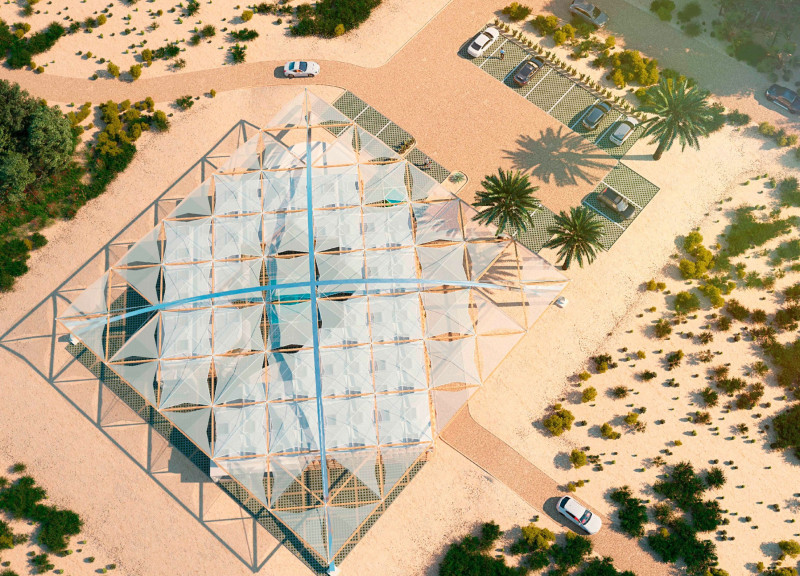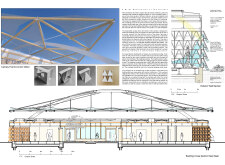5 key facts about this project
The project is set against the backdrop of the Alhambra Palace in Granada, Spain, aiming to create a calm environment that meets the needs of its users while blending harmoniously with the natural landscape. The design focuses on sustainability, comfort, and cultural heritage, incorporating traditional architectural features within a modern context.
Suspended Canopy
A key feature of the design is a suspended canopy that provides shade from the sun, reminiscent of the protective qualities of Bedouin tents. This canopy is made from a grid of Douglas Fir laminated wood beams, which are prefabricated into squares and assembled on-site. The structure allows natural light to filter into the interior, enhancing thermal comfort while maintaining an open atmosphere.
Central Courtyard
The central courtyard acts as a vital space in the design, reflecting significant aspects of traditional Arabic architecture. This area includes water fountains and greenery, which help cool and humidify the surrounding air. The courtyard not only encourages natural ventilation but also fosters social interactions among users. Rooms face both the courtyard and the outer areas, maximizing opportunities for cross-ventilation and strengthening connections to nature.
Sustainable Design Strategies
Sustainability is at the heart of the design, significantly reducing reliance on mechanical cooling systems. Fresh air enters through the courtyard walls, where it is cooled by water and plants before circulating throughout the building. The cellular wall units are designed to ensure airflow while including HEPA filters to maintain indoor air quality. Mechanical fans assist in air movement at specific points, contributing to an effective natural ventilation system.
The combination of these design elements creates a cohesive space that emphasizes the interaction of light, air, and water. Attention to detail in both comfort and aesthetics shapes an environment that is both functional and inviting, enhancing the overall experience for everyone who inhabits it.






















































